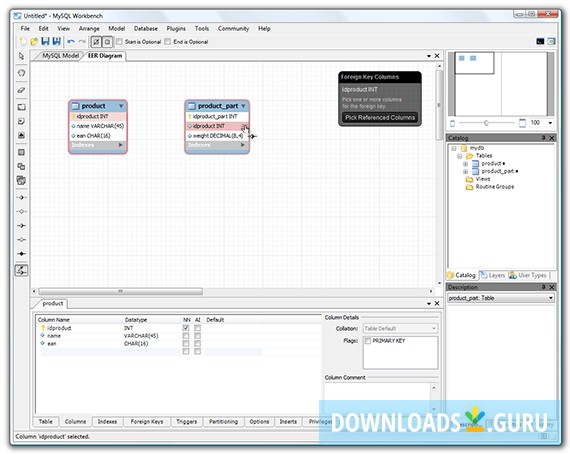

- #Mysql workbench alternatives how to#
- #Mysql workbench alternatives full#
- #Mysql workbench alternatives pro#
- #Mysql workbench alternatives free#
Sequel Pro is a fast database application due to its threaded interface. It allows you to save connections as documents and reuse them easily. It is well-documented and easy to install. You can easily connect Sequel Pro to local as well as remote databases.
#Mysql workbench alternatives full#
It is a Mac client for MySQL database that provides full MySQL support. Sequel Pro is one of the most MySQL Workbench alternatives for Mac.
#Mysql workbench alternatives how to#
It is a very mature and robust tool for MySQL database management.īonus Read : How to Enable Query Cache in MySQL 2. It also supports multiple saved sessions, user management, data export and import, SSH tunneling, procedures, triggers and events. HeidiSQL makes it easy to create, edit, manage tables, databases, views.
#Mysql workbench alternatives free#
It is free to use and also supports PostgreSQL and SQL Server databases. HeidiSQL is one of the best MySQL Workbench alternatives for Windows, for database administration and management. Here are the top 5 alternatives to MySQL Workbench. However, if it doesn’t meet your requirements, then here are the top 5 MySQL Workbench alternatives that you can try. It also doesn’t support creating users with SSL enforcement.īoth of these tools do not support the new MySQL 8.0 dynamic privileges syntax e.g, BACKUP_ADMIN, BINLOG_ADMIN, SYSTEM_VARIABLES_ADMIN, etc.MySQL Workbench is one of the most popular MySQL database management and monitoring tools for visual database schema design, SQL query building, administration and maintenance. Thus, it doesn’t provide a centralized view of all users in the cluster. On the down side, MySQL Workbench is not a cluster friendly tool since every management connection is tailored to one endpoint MySQL server. The preset administrative role is a neat way of granting a set of privileges to a user, based on the work the user must carry out on the server. It also provides much clearer guidance with description on most of the input fields, especially in the critical parts like authentication and privilege management. It’s built to be more friendly to developers and DBAs and has the advantage of being built and backed by the Oracle team, who owns and maintains MySQL server. The strongest advantage of MySQL Workbench is that it is free, and can be used together with schema management and administration. It does not support all platforms that MySQL can run, particularly only certain Linux distributions like CentOS, RHEL, Debian and Ubuntu. However, user management requires active subscription and is not available in the community edition. ClusterControl has a cleaner way when listing out user accounts, where you can see all necessary information right in the listing page. ClusterControl also supports creating a database user on multiple hosts at once, where it will make sure the created user exists on all database servers in the cluster. Advantages & DisadvantagesĬlusterControl supports multiple database vendors so you will get a similar user experience dealing with other database servers. However, when dropping a MySQL user from ProxySQL, the corresponding database user will remain on the MySQL server. When creating a new database user via ProxySQL management page, ClusterControl will automatically create the corresponding user on both ProxySQL and MySQL. You should see a list of existing users on the left-side while on the right-side is the authentication and authorization configuration section for the selected user: MySQL Workbench – Database User Managementįor MySQL Workbench, you can find all the user management stuff under Administration -> Management -> User and Privileges. In this blog post, we are going to compare and contrast MySQL database user management features between MySQL Workbench and ClusterControl. To use with an application, commonly a MySQL user is configured to have full privileges (ALL PRIVILEGES) on the schema level, meaning the database user used by the application has the freedom to perform any actions on the assigned database. Most applications that use MySQL as the datastore require this task to be done before the application could work as intended. For example, instead of assigning SUPER privilege only for configuration management purposes, that particular user is better be granted with SYSTEM_VARIABLES_ADMIN privilege only.Ĭreating a database schema with its respective user is the very initial step to start using MySQL as your database server. A component that can be registered and unregistered at runtime which provides better control over global privileges. Dynamic privileges – New in MySQL 8.0.Static privileges – The common global, schema and administrative privileges like SELECT, ALTER, SUPER and USAGE, built into the server.Since MySQL 8.0, there are now two types of database user privileges: MySQL user and privilege management is very critical for authentication, authorization and accounting purposes.


 0 kommentar(er)
0 kommentar(er)
